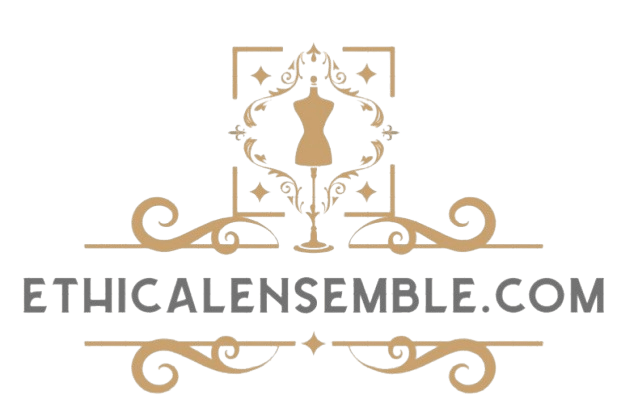How to Spot Faux Eco-Friendly Fabrics
As our world grows more focused on sustainability, it’s important to understand eco-friendly fabrics. But what truly makes a fabric “eco-friendly”? With so much misinformation out there, it’s easy to get confused by common myths.
This article guides you through the essentials busting myths, spotting faux eco-friendly fabrics, and discovering truly sustainable options. You ll also find practical tips for making informed and ethical shopping choices. Let s help you build a wardrobe that represents your commitment to a greener future!
Contents
Key Takeaways:
- Don’t fall for misleading marketing! Just because a fabric is labeled “eco-friendly” doesn’t mean it actually is. Look for certifications and research to verify its sustainability.
- Beware of greenwashing! Many companies use buzzwords to mislead consumers. Always read the fine print for genuine eco-friendly claims.
- Explore alternative fabrics! Instead of faux eco-friendly options, consider truly sustainable materials like organic cotton, hemp, and Tencel.
Understanding Eco-Friendly Fabrics
Understanding eco-friendly fabrics is crucial for anyone interested in sustainable fashion. These materials help minimize your environmental footprint and promote ethical fashion practices. Biodegradable options like organic hemp and Tencel represent a shift towards responsible textiles.
This evolution encourages you to make informed choices when selecting brands committed to sustainable development.
What Makes a Fabric ‘Eco-Friendly’?
An eco-friendly fabric is made from sustainable materials that harm the environment less. They often come from organic cotton or biodegradable resources that use minimal chemicals.
We deem fabrics environmentally responsible when sourced from suppliers focused on renewable resources and methods that significantly reduce water consumption and pollution. Consider the choice of dyes and finishing treatments, as conventional chemicals can disrupt ecosystems. Understanding the impact of sustainable fabrics on the environment can further guide your choices.
Common Misconceptions about Eco-Friendly Fabrics
You might encounter many misconceptions about eco-friendly fabrics in sustainable fashion. Such misunderstandings often stem from greenwashing tactics that mislead consumers regarding the true environmental credentials of products.
Myths and Facts
Myths suggest that all sustainable materials are low quality or expensive. In reality, sustainable fashion includes various price points and fabric types!
Many brands offer eco-friendly practices and high-quality products at competitive prices. Brands like Patagonia and Everlane demonstrate that eco-friendly options can fit various budgets without sacrificing quality.
This understanding empowers you to make choices that reflect your values!
Identifying Faux Eco-Friendly Fabrics
Identifying faux eco-friendly fabrics can be tricky due to greenwashing tactics. Greenwashing involves misleading marketing strategies that create an illusion of sustainability.
Red Flags and Warning Signs
When searching for true eco-friendly fabrics, watch for red flags. Vague language on labels, claims without certifications, and a lack of transparency around processing methods signal caution.
These indicators can mislead you into believing you re making responsible choices when you might not be. If you see a label that claims “green” or “eco-friendly” without evidence, investigate further.
Be discerning with brands that cannot clearly explain their supply chain practices or raw material sourcing. Look for trusted certifications such as:
- Global Organic Textile Standard (GOTS)
- Fairtrade Certified
By prioritizing these certifications, you can shop confidently, knowing you support brands genuinely committed to environmental stewardship.
Eco-Friendly Alternatives
Exploring eco-friendly alternatives opens the door to sustainable options like organic cotton and recycled polyester. These choices minimize fabric waste and empower you to support ethical suppliers.
Sustainable and Ethical Fabric Choices
By embracing sustainable and ethical fabric choices like organic hemp, Tencel, Pi atex, and deadstock fabric, you support environmentally responsible practices in fashion.
These materials minimize waste and foster biodiversity by using natural resources sustainably. For example, organic hemp grows quickly and thrives without pesticides. Tencel, crafted from sustainably sourced wood pulp, uses a closed-loop process that reduces water pollution and waste. Choosing eco-friendly materials in fashion can further support these efforts.
Pi atex, made from pineapple leaf fibers, repurposes agricultural byproducts into viable textiles. As ethical fashion gains popularity, many designers incorporate these innovative fabrics into their collections, creating stylish garments that represent a commitment to the best practices for working with eco-friendly fabrics and sustainability.
Tips for Shopping for Eco-Friendly Fabrics
When shopping for eco-friendly fabrics, being informed about certification standards is vital. Knowing how to read labels and recognizing sustainable practices empowers you to make ethical fashion choices.
How to Read Labels and Do Your Research
Learning to read labels is crucial for identifying eco-friendly fabrics. This knowledge allows you to make informed choices about the sustainable materials used by various brands.
Familiarize yourself with key terms and symbols to understand the environmental impact of your clothing choices. Certifications like GOTS or OEKO-TEX signify adherence to rigorous standards. To enhance your sustainable practices, consider learning about best practices for sustainable fabric care. Pay attention to terms like “recycled” or “organic” to find brands prioritizing sustainability.
Investigate a brand s manufacturing practices and sourcing to choose products that align with your values. This informed approach enhances your wardrobe and contributes positively to the planet.
Frequently Asked Questions
What are faux eco-friendly fabrics?
Faux eco-friendly fabrics are marketed as environmentally friendly but use harmful chemicals or non-sustainable practices.
How can I spot faux eco-friendly fabrics?
Look for vague claims, lack of certifications, and unclear manufacturing processes. Awareness of these signs helps you make better choices.
Can I trust fabric labels that claim to be “green” or “natural”?
These terms lack regulation, so conduct your research and seek specific certifications or sustainable practices.
What are some red flags when shopping for eco-friendly fabrics?
Be cautious of very cheap fabrics, which may come from unsustainable practices. Also, avoid fabrics that claim to be “eco-friendly” without supporting evidence or certifications.
Are there alternatives to fake eco-friendly fabrics?
Yes! Opt for organic materials like cotton, linen, hemp, or bamboo, as these materials are more sustainable and less harmful to the environment.
Make informed choices for a better planet! Share your thoughts or experiences regarding eco-friendly fabrics!
